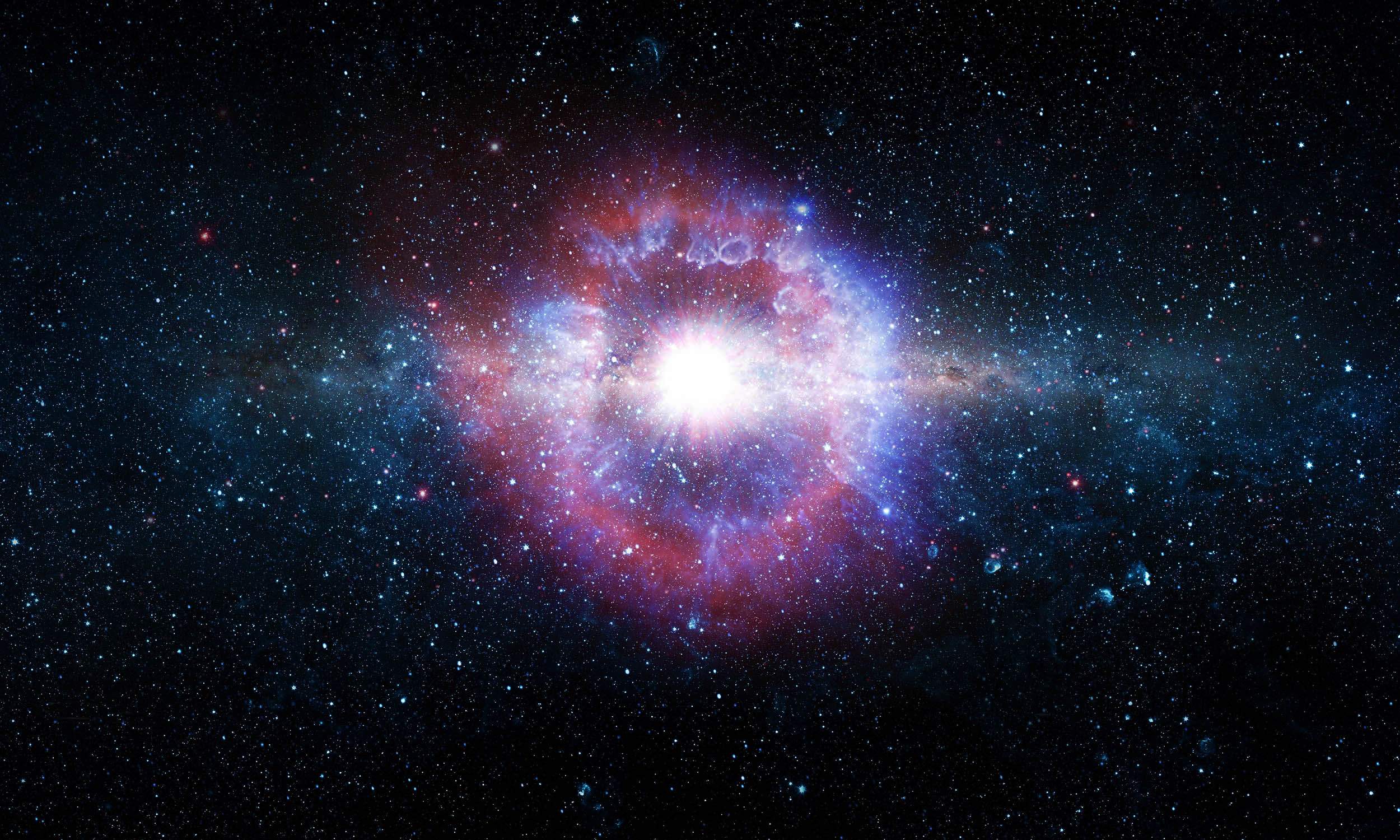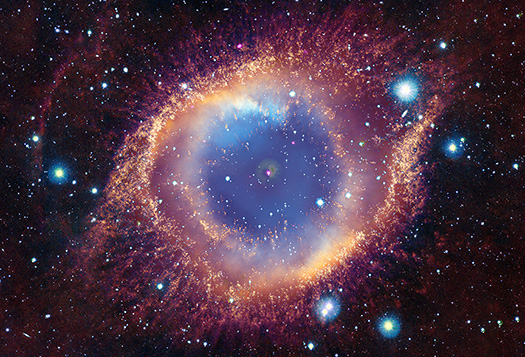
Stage 6b
Nova
when a red giant and a white dwarf orbit each other, the red star’s outer gas gets pulled onto the white dwarf due to gravity. Hydrogen from the red star collects on the white dwarf’s surface, and a thermonuclear explosion happens once enough hydrogen piles up, igniting a bright burst called a nova.
